#outdoor cinematography
Photo

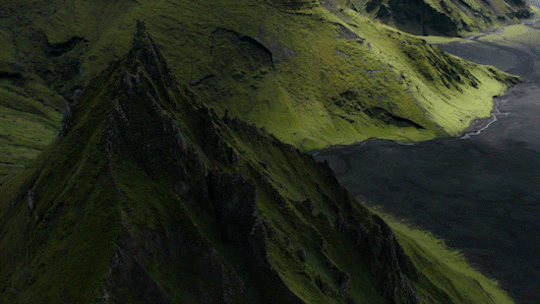
v: Film Composite | gif by me
#nature#geology#landscape#volcano#scenery#art#iceland#wanderlust#mountains#outdoors#cinematography#my gif
2K notes
·
View notes
Text




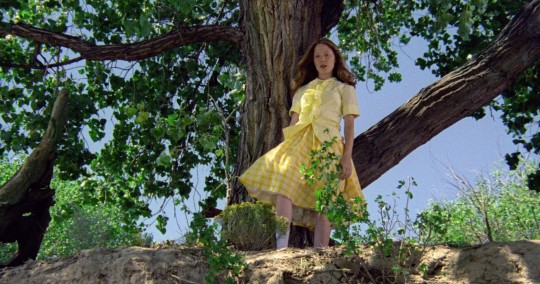

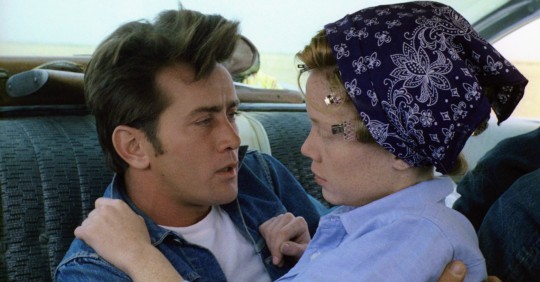

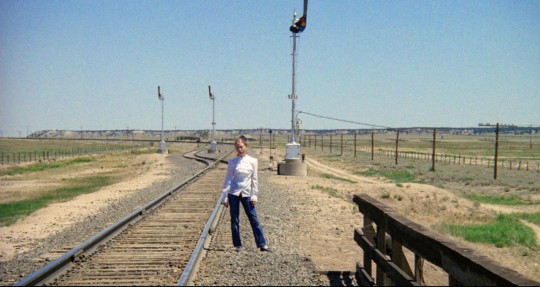

Badlands 1973
#retro#1970s#crime#film#70s#badlands#sissy spacek#cinema#cinematography#terrence malick#martin sheen#road trip#movies#director#tak fujimoto#cinephile#outdoors#landscape#romance#nature#🌿 🌻 🌾
182 notes
·
View notes
Text
youtube
44°58'23.5"N 6°03'54.8"E
youtube/oftwolands
www.oftwolands.com
#of two lands#travel#adventure#landscape#mountains#nature#filmmaking#explore#france#french alps#hiking#girl#outdoors#la grave#cinematographer#cinematography#color grading#bmcc6k#blackmagic design#cinema camera 6k#video#YouTube#florent piovesan#Youtube
26 notes
·
View notes
Text
Forest Composition Storytelling References


Credit: Etherington Brothers
#unnumbered#forest#forests#woods#woodlands#nature#environment#composition#layout#cinematography#trees#tree#trunk#ar#art tutorial#drawing tip#outdoors#art tip#art tips#art tutorials#drawing#drawing tips#drawing tutorial#drawing tutorials#art#ref#reference#references
23 notes
·
View notes
Text

#camp#camping#nature#outdoors#california#photography#photographer#cinematography#cinematographer#big sur#the north face
3 notes
·
View notes
Text

LOVE IN TRANSLATION: THE FINALE (2023)
PITTAYA SAECHUA (as Yang)
&
KANTAPON JINDATAWEEPHOL (as Phumjai)
#THE KISSING CHRONICLES#BL¹ - BOYS' LOVE#LOVE IN TRANSLATION#PHUMJAI & YANG'S KISS CONTINUED#AN EXTRA GIF (RATHER ANOTHER)#DAOU OFFROAD#YANG PHUMJAI#My GIFS#SCENIC#CINEMATOGRAPHY#GREAT OUTDOOR SHOTS#BL-BAM-BEYOND FAMILY OF BLOGS#LAZ1
3 notes
·
View notes
Text



I just finished season 2 and I have lots to share and post that is much deeper, but one of the biggest/first things I noticed about this season was a dramatic shift in camera angles and effects. They experimented a lot more and it was so fun to see!
6 notes
·
View notes
Text




Patagonia, Argentina.
#argentina#patagonia#fishing#fly fishing#wild horses#river#wide open#nature#landscape#outdoors#photography#cinematography
3 notes
·
View notes
Text

Check Out My Pinterest Account 🔥♥️
#outfit inspiration#mensfashion#outfit#nature#outdoors#outdoor photography#morning coffee#morning vibes#resort#luxury hotel#resturant#pinterest#facebook#instagram#youtube#video creator#content creator#videography#photography#cinematography#video vlog#lifestyle#influencers#painting#omg#new cars#luxury cars#sports cars#nike
0 notes
Text
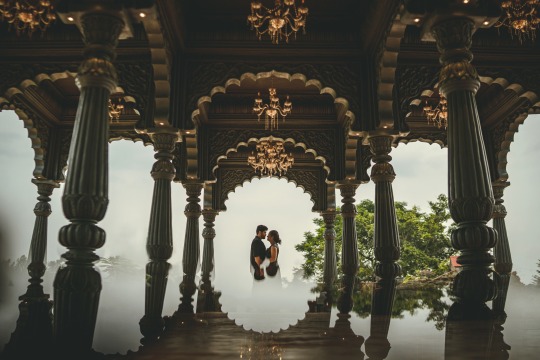

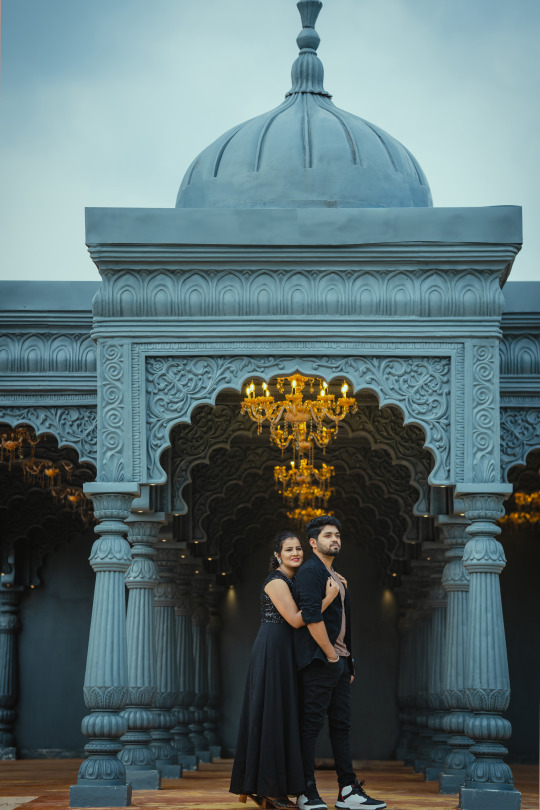
Every moment spent with you is a moment to cherish✨
Pre Wedding Photography
#prewedding shoot#pre wedding shoot#pre wedding shooting#pre wed shoot#prewedding photoshoot#pre wedding photography#prewedding photo shoot#pre wedding photos#couple photoshoot#pre wedding video#cinematic video#cinematography#prewedding outdoor#prewedding shoot Bangalore#best prewedding shoot
0 notes
Text


v: Adrien Jacta | gif by me
54 notes
·
View notes
Text

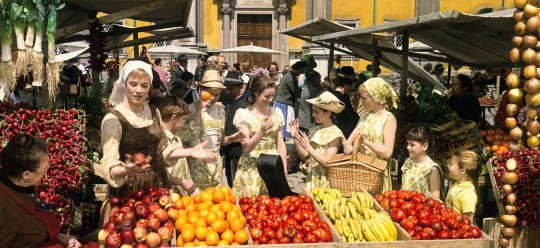





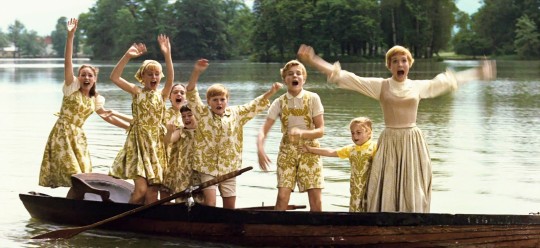
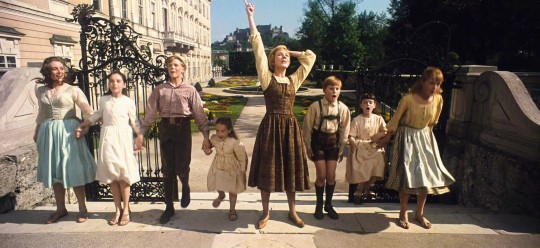
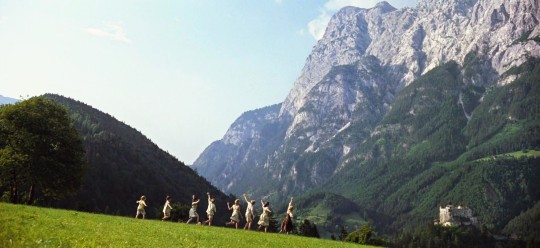
The Sound of Music (1965)
#julie andrews#the sound of music#outdoors#cinematography#retro#nicholas hammond#old hollywood#film#hollywood#1960s#movies#scenery#landscape#kym karath#cinema#musicals#duane chase#angela cartwright#debbie turner#filmedit#robert wise#director#heather menzies#charmian carr#rodgers and hammerstein#🎭
180 notes
·
View notes
Photo


https://www.youtube.com/watch?v=KJWAgUKOB-k&t=60s
44°58'23.5"N 6°03'54.8"E
youtube/oftwolands
#bmpcc6k#anamorphic#frames#france#French alps#cinematography#filmmaking#girl#travel#alps#summer#mountains#bmpcc#anamorphic lens#Blackmagic design#mountain#landscape#outdoor#florent piovesan#of two lands
78 notes
·
View notes
Text
Quickly and poorly reviewing and ranking adaptations of Jane Eyre (1996, 1997, 2006, 2011) by their pros and cons:
1996 pros:
Best fire scene, easily. It actually gave me that excited feeling that good cinema gives a person. Much of the cinematic art was enjoyable altogether, including the costumes.
This film probably has ond of the best Bertha's in my opinion. She's truly sympathetic, beautiful, and fierce. probably tied for my favorite Bertha actress with 2006. She and Poole are given little time in the story, however.
Most adaptations shit on St. John. Here, that isn't the case. What little time he has is spent in making him much more appealing than I've ever seen him, both physically and characteristically. I like this, because many forget that Jane did love him in her way, and he is supposed to be attractive and nice despite his zealotism.
1996 has the best Adèle, which is amazing for me as a big Adèle fan. There is more focus on her and her relationships with Jane/Rochester. I particularly love the scene where J draws R and Adèle tries to play cupid a little, and when Adèle is offended when the ladies insult Jane.
Best Lowood plot by far. This is the first time I've been able to stand the Young Jane scenes, and little time was devoted to her early life with the Reeds, just enough to let us know she was abused. I like this choice. The young actresses playing Jane and Helen were the best and most rebelious I've seen yet. Their hair cutting scene brought tears to my eyes, which rarely ever happens for me.
Good Blanche plotline. I absolutely love the cinematography/aesthetic & set design.
1996 cons:
the actors are individually endearing in some ways (the scene of Jane and the mirror is particularly touching, as is their reunion). However, The biggest downside to this adaptation is that the chemistry between Jane and Rochester was lacking in my opinion. this is particularly notable in their meeting scene and first proposal scene.
William Hurt is a fantastic actor, and he's likeable, but he's not my favorite Rochester ever. He's alright. On a rewatch I could see myself warming to him more.
I love Charlotte Gainsbourg more for her music than her acting. Granted, she was young here like Jane is supposed to be, so I do not blame her. Visually, aside from her height, I can absolutely see her as Jane. As the film went on I warmed to her acting style; Jane Eyre is a hard role to perform due to her inwardness. I don't think she was horrible, but Anna Paquin (of later True Blood fame) as Young Jane Eyre somewhat outshined Gainsbourg.
I was disappointed in Adèle being sent away to school before the disaster and her not coming back in the end (why couldn't they have had her running with Pilot in the landscape shot!!!).
1997 pros:
Maybe the most accurate Jane and Rochester. I wasn't expecting to like him at all but he blew me away. excellent chemistry between the actors. The dancing scene was very captivating, as was the scene with him jumping from the walkway, their outdoor talks, him chasing her down the stairs — really, I was impressed, because I thought I'd hate this film. Like in the novel and in 96, both actors are a bit conventionally unattractive (well, compared to 11 and to some extent 06) - and like them, the characters grow on you.
BEST ST. JOHN (although 2006 has the best Rivers sisters) - St. John is described as being nice though serious, and looking like a statue of a Greek God with all the coldness AND beauty - and this movie is the only one who relatively understood that assignment (96 came close emphasizing his niceness). Most adaptations adapt his coldness but not his conventional Eurocentric good looks, which not only symbolize his colonizer attribute but also his appeal to Jane and the others. It's also important to have a conventionally handsome actor play St. John just as it's important to have a conventionally less attractive Jane Eyre because one theme of the novel is the critique of Victorian physiognomy & beauty; Jane/Rochester being unconventionally attractive is a contrast to Bertha, St. John, Blanche, Georgiana being attractive, so I think this element is not inconsequential. The difficult part is that beauty is highly subjective, so relying on conventional standards is key, as is the reminder that Victorian standards were a bit different from our own.
good Lowood plotline, good Gateshead plotline, fantastic Adèle with lots of adorableness & miraculous though OOC bonding between her and Rochester, fantastic costuming (though I don't know about accuracy), good Blanche plotline overall. Probably my favorite Bertha plotline for being sufficiently creepy.
1997 cons:
this isn't really a con for me but many people may dislike 97 Rochester for being passionate to the point of coming off crazy, and physical domineering as when he grabs Jane when she tries to leave — however, this does kind of fit for canonical Rochester & I don't mind it since he's supposed to be that way, but this is still arguably a con nevertheless. he does come off as too forward but i get they were trying to capture the whole overpassionate thing. it does come off as a little more toxic than other depictions perhaps!
I have very few complaints overall. I don't think the chemistry is as appealing as 2006, but it is accurate. I wish there was more Adèle, but you can't have everything.
The posters are bad and make the actors look worse than they are which subsequently turns people away. I think 1996 was marketed a bit better but that 2006 also suffers from bad poster syndrome which had an effect on me also. Presentation is important; marketing and advertising are also important in cinema. The aesthetic isn't as good as 1996 although I don't think the visuals are bad overall.
Jane is a little dissociative seeming, which can be off-putting for myself and other viewers I assume, but to be fair she is described as being like a weird little elf creature in the book, and the actress plays this very well, actually looking quite ill when Rochester asks if she is.
2006 pros:
Best chemistry between Jane/Rochester by far and for this reason will always be my favorite because it actually made me fall in love with Rochester in the end though I didn't like his portrayal at all at first (that's power! — and my love for this Rochester should arguably be a con for the sake of my sanity and pride). best Rochester imo and a fantastic Jane. I love love love the way they did the Rochester storytime flashbacks and fleshed out his character as a result.
Best and most enjoyable Blanche Ingram plotline by far (although no one likes the lack of Rochester-in-drag, the party scenes & insertion of the twin flame theory was delightful).
some of the best dialogue, fantastic Adèle plotline, good Bertha plotline, best Pilot, best Rosamond, good costuming, good sets/locations (the fairytale ambience of Jane walking outside before meeting Rochester! Rochester's weird study!), I like the extra focus placed on themes such as nature/genetics/science, religion, travel, sexuality, etc.
2006 cons:
I dislike the way they did the Lowood and Gateshead plots, and although the Rivers sisters were good, I resent their St. John plotline for the most part. I disliked the lack of mystery surrounding Bertha; I think they made it way too obvious & not creepy enough, especially in showing her perspective from the window and giving her lines (one line, calling Jane a whore in Spanish) which no other adaptation does. I was sorely bored before and after Thornfield and only really revived when she got back to Ferndean (although Jane's flashbacks and some of the St. John plotline [the references to love, reminding us of her inner thoughts of Rochester] kept me alive). I suppose there were prices to pay for the excellence of the Jane and Rochester moments. - in comparison these seem like small prices, but still!
2011 pros:
deciding to go with a non-linear structure was a fantastic choice though I was skeptical of it at first, good St. John plotline for the most part & which they put emphasis on, really fantastic Jane with a lot of good fierce moments & lines, maybe the best Gateshead plotline including Mrs. Reed & the Red Room scene (although the lack of red was disappointing, and the lack of explanation for the chimney monster is conflicting – was it all in her head?), good young Jane, one of the best Richard Masons, star-studded cast, good dialogue, maybe the best costuming, Aesthetic™️
2011 cons:
least favorite adele (not insulting the child actress, this is the fault of the writers/directors)
— this is where i call security to protect me from an onslaught of jane eyre 2011 fans here on tumblr. alright, maybe i should watch it again — but i was expecting a lot more. particularly from michael fassbender as mr. rochester. probably my least favorite rochester by far & the least sympathetic. this rochester captures the dark and dangerous part of him but imo not so much the higher feelings that define him. the lack of humour & lack of unrepressed passion/drama/rage is noticeable - rochester isn't supposed to be quiet; as toby stephens (2006) said in an interview, rochester never shuts up in the book, he's really too eccentric to even be adapted accurately; he has to be toned down to be realistic, but here he's muted too far. - i felt like mia was carrying all of their scenes on her back & that the chemistry really rested on her primarily.
Cinematography-wise, there are some gems in the stills (famous hand holding gif), but I dislike the overall muted palette of the film; many will think this suits the tone and in some ways I agree, however, I will always prefer color and dislike the epidemic of desaturation we've seen so often in 21st century cinema. For this reason, 96, 97, 06 all triumph against 2011 aesthetically for me personally, although I still recognize some of the artistry of 2011, it is not my preference.
My overall ranking: 2006 (primarily for Jane/Rochester), 1997 (excellent overall), 1996 (good but flawed), 2011 (I tried but overall did not enjoy it).
#jane eyre#jane eyre 2011#jane eyre 2006#jane eyre 1996#jane eyre 1997#mr rochester#charlotte bronte#charlotte brontë#the brontes#movie reviews#film review#film comparison#film reviews#cinema#adaptations#critique#my analysis#my reviews#my opinion
55 notes
·
View notes
Text

#camp#camping#nature#outdoors#california#photography#photographer#cinematography#cinematographer#big sur
2 notes
·
View notes
Text
My Journey to You Ep. 23 visuals: Ravens only belong to winter
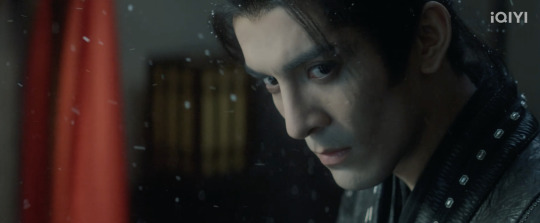
Say what you will about this show's writing for the lead characters (particularly Gong Ziyu and Shangguan Qian), but you can't deny MJTY's writing when it comes to its minor characters. I came to care for so many of them with just a few scenes, and I think a lot of that is due to the show's visual storytelling, which is used to reinforce its themes in an almost brutally efficient way.
Nowhere is this truer than with Hanya Si and the show's use of shadow and light to communicate his story.

The death and violent secrecy surrounding Wufeng have been etched so permanently on Hanya's soul that he can't escape its darkness. He no longer sees himself as a man, but as something less than:
"[Ravens] know there are hunters and traps in the dark forest, but they can never fly to the light. They've been eating dirty mice and rotten meat since they were born. Even their screams are fearful and ferocious. They can only live in the dark and beneath the sunset."
This is communicated over and over again with how the show physically positions Hanya either against or away from light for most of his scenes. Whether at the Wufeng headquarters or in the Gong residence, he is placed in the shadows--even as other characters stand in or move toward light.



Interestingly, he's really the only assassin we're officially introduced to who is shot like that. For example, check out the scene below where he, Hanya Qi, and two of the wangs meet. Even though the overall scene is dark, Hanya Si is the darkest as he's positioned furthest away from the overhead light. And in the final showdown at the Gong residence, the other assassins fight during the day (which Hanya Si has never been portrayed as doing until his final scene). Unlike the others who revel in killing their targets in broad daylight, Hanya has become so consumed by his sins that he doesn't believe he's worthy of existing anywhere but the darkness.
(Side Note: I found it telling that the last Wufeng attack that killed Gong Shangjue's mother and brother also happened during the day rather than at nighttime. There's a startling brazenness to Wufeng's violence.)

The exception to this pattern, of course, is when Hanya is shot with either Yun Weishan or Yun Que. Those moments with his protégés are the only times he embraces his own humanity and dares to step out of his self-imposed prison to provide care in whatever misplaced way he can. It's only in those scenes that his face becomes awash in direct light.

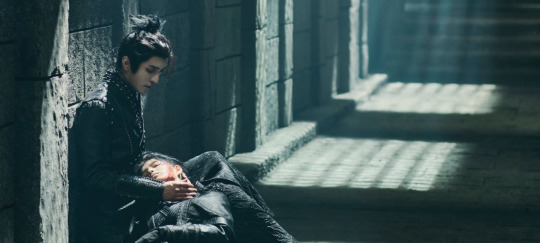
So when Hanya decides to help Weishan fight Ziyi, it's fitting that the show commemorates this character-defining moment by drenching the entire screen in sunlight.
I absolutely love this shot with the lens flare. The show rarely uses this camera effect in its outdoor cinematography so you can feel the foreignness Hanya must have felt walking into the early morning light to face his destiny. The blown-out sky is wondrous and almost overwhelming in its brightness.
And it also seals his fate because we know ravens can never fly to the light; they can only live in the dark.
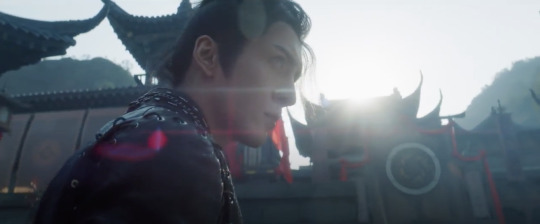

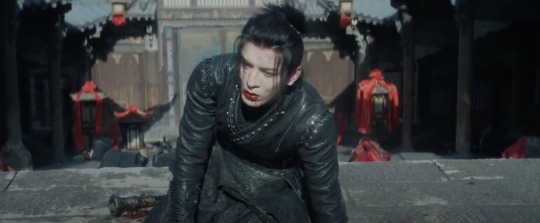
The mirroring of Weishan and Hanya’s first sunset and last sunrise together nearly took me out. Director Edward Guo clearly likes reusing certain compositional elements to establish his characters, and with Hanya's scenes that repetition not only lends itself to a feeling of tragic inevitability but also freeing closure.
"I watched the sunset so many times with you. This time, I can finally watch the sunrise with you."
What a perfect way to send off this character.
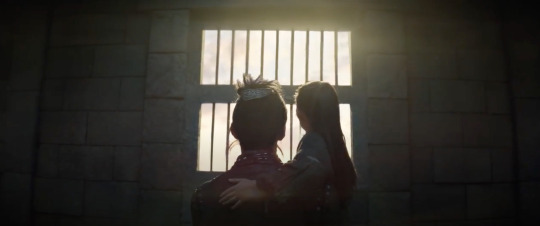

101 notes
·
View notes